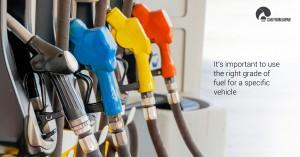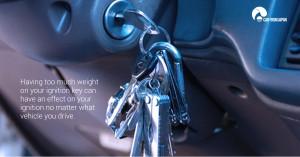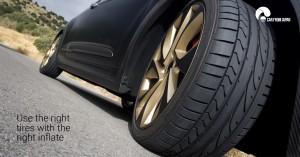Cart is empty!
Please add some product!
Welcome To Richmond Hill Auto Repair
Please add some product!
Welcome To Richmond Hill Auto Repair

Looking for some tips from a professional to help you keep your car in good shape ? check out our car advice section below where we give pro car tips on how to keep your car in the best running order for the long term!
In order to keep your car running at its best, it’s important to keep up with routine maintenance and inspections. By properly maintaining your vehicle, you’ll reduce future repair costs, optimize your car’s performance, maintain its value and extend its life. Here are some regular maintenance needs to keep in mind for your vehicle:
Oil is essential to your engine. And for most people, changing it every three months or 3,000 miles is the first thing you should do to keep your car in good shape. But sometimes, your oil needs some extra attention. If you tow a trailer, drive in dusty conditions, or frequently drive in stop-and-go traffic, you should change your oil more often. Short trips without letting your engine warm up can contaminate your oil and require more oil changes than average too. So, to keep your car running smooth, make sure you have the following engine-related services done regularly:
Oil is essential to your engine. And for most people, changing it every three months or 3,000 miles is the first thing you should do to keep your car in good shape. But sometimes, your oil needs some extra attention. If you tow a trailer, drive in dusty conditions, or frequently drive in stop-and-go traffic, you should change your oil more often. Short trips without letting your engine warm up can contaminate your oil and require more oil changes than average too. So, to keep your car running smooth, make sure you have the following engine-related services done regularly:
Your transmission makes your car move by bringing power from the engine to the wheels. A regular checkup of the transmission fluid will keep your car shifting smoothly.
Batteries store the energy that’s needed to start your car’s engine. And once the engine is running, the alternator starts re-charging the battery for the next start. Maintenance includes keeping the battery clean and secured so it doesn’t vibrate, keeping connections clean and tight at the terminals, and checking the water level (if necessary).
Your emission system runs almost the entire length of your vehicle. And in the process of moving exhaust away from the engine and passenger cabin, it analyzes the gases, refines them into water vapor and less-harmful gases, and directs them through dampers to reduce noise. Your emission system does all of this important work while hanging from the bottom of your vehicle – and as you can imagine, it can take a lot of abuse down there. So to keep your car running smoothly, quietly and efficiently, you should have your emission system inspected every year.
Many of today’s cars have disc brakes in the front and drum brakes in back. And all brakes rely on friction, which is supplied by either a brake pad or a brake shoe to slow and stop your car. To stop a wheel, a disc brake uses a caliper fitted with brake pads to grab a spinning disc, or rotor. A drum brake has a wheel cylinder that pushes a brake shoe against the inside of a spinning drum.
When brakes need a mechanic’s attention, they give certain warning signals. For example, a low or spongy pedal can mean that there’s air in the hydraulic system. A red brake-warning light that stays on could mean that there’s an imbalance in your hydraulic system. And while some brake noises are normal, chirps, continuous squeals and grinding sounds almost always mean that it’s time for new brake pads or shoes. But anytime you notice something irregular about your brakes, it’s a good idea to have them checked out.
Your car’s owner’s manual will provide a maintenance schedule designed to keep your brakes in good condition. Following it is the easiest way to avoid expense repairs and the potential for catastrophic brake failure. But at the very least, you should have your brakes inspected every year.
You may not know it, but in many of today’s cars the heating and air conditioning systems are integrated so that some parts of your climate control system are working hard all year long. Your driving comfort improves greatly when your heater or air conditioning is working properly.
Your air conditioning system works like a refrigerator, pumping freon through an evaporator under the dashboard. The freon absorbs the heat from the passenger compartment, circulates it through the condenser and releases it through the front grill of your car. When running right, this is a constant process that results in a cool and comfortable driving environment for you. If your air conditioning system isn’t keep you cool, it’s usually due to a leak in the system. You should have your full climate control system inspected regularly to ensure it is working properly.
The cooling system keeps your engine at the optimum operating temperature by pumping coolant between the engine and the radiator. Your mechanic can help you keep your cooling system in good condition by checking the coolant levels in the reservoir tanks, checking the hoses for wear and tear and providing a flush-and-fill service, which drains dirty fluid and replaces it with clean coolant.
Your shocks, springs, struts, steering and tires are all part of your suspension system. They all work together to keep you comfortable and in control on the road.
But sometimes, a problem in one area can be a symptom of a problem in another area. For instance, if you notice that your tires are wearing unevenly, it may just be your tire pressure. Heavier wear in the middle means the pressure is too high. Heavy wear on the edges means the pressure is too low. But if you notice excessive wear on just one edge, it’s usually a sign that you have an alignment problem that a mechanic should handle. For that and other symptoms – like steering vibrations or pulling – you should have your steering and suspension systems inspected. That inspection should include: checking the power steering fluid, listening for unusual noises while the vehicle is in motion and a visual inspection of all major suspension components including the shocks. struts and springs.
Following a regular maintenance schedule is an important step in keeping your car safe and running for years to come. Consult your owner’s manual or mechanic to see when your car should have its next maintenance checkup.
Anyone who purchases a new or used car has every intention of getting the most out of their vehicle. Among other things, this means keeping it in drivable condition for as long as possible, or at least until they can upgrade to a car that has better features and capabilities. Yet many car owners simply don’t take the measures necessary to maximize the lifespan of their vehicle, and, as a result, they encounter serious mechanical problems that could have been avoided with a little preventative maintenance.
To tout the virtues of preventative maintenance is to make a claim that few people would disagree with—after all, we’ve all heard the old saying that an ounce of prevention beats a pound of cure. In practice, however, many people let things slide. Part of the problem is the understandable human urge to hold on to their money, but preventative maintenance doesn’t cost a substantial amount of money—and it pays off in the long term by averting more expensive bills down the road.
Having said that, we’re left with the obvious question: What should your preventative auto maintenance program include? What exactly needs to be done to ensure that your car will remain road-ready? Below we’ll list some suggestions that have been widely shown to be highly effective in promoting good car health.
Before we get to that, though, it’s important to mention that you don’t need to figure out how to carry out most of these procedures by yourself (although the budget-conscious car owner who doesn’t mind getting their hands dirty may wish to do that). You can have many of these tasks performed inexpensively by your friendly neighborhood car mechanic. Taking your car to the shop may cost you a little money, but, as we have said, not performing maintenance tasks will eventually cost you much more. The worst possible solution is to simply ignore these recommendations altogether.
Check Your Owner’s Manual
One of the most important pieces of equipment in your car isn’t under your hood—it’s in your glove compartment. We’re referring to your owner’s manual, which is full of make- and model-specific information about the vehicle you drive.
What kind of fuel does the manufacturer recommend? Can you use chains on your tires in snowy conditions without voiding the warranty? The answers to these questions and many more should be within the pages of your owner’s manual, and that’s all the reason you need to become acquainted with it.
Check Your Tire Pressure
Here’s one issue whose importance tends to be seriously underestimated. Underinflated tires wear out faster than properly inflated ones. Poor tire pressure also contributes to poor gas mileage. By the same token, however, you need to make sure that your tires aren’t overinflated—that increases your risk of a blowout, which is not something you want to experience while traveling 70 mph down the highway.
You need to keep your tires inflated according to manufacturer specifications. For that reason, it’s a smart idea to take a look at your tires once a month—or maybe sooner if you typically drive in harsh conditions. You can also purchase a tire pressure gauge to give you more precise data about what’s going on inside your wheels.
Rotate Your Tires
While we’re on the subject of tires, you should try to have them rotated periodically. If you’re not clear on what this means, the practice of tire rotation involves taking off each tire and putting it back in another location: e.g., switching the left and right tires. The purpose of this is to ensure that the tires sustain wear evenly, which extends their lifespan.
Change Your Oil
For decades, car owners were bombarded with the message that their vehicle’s oil needed to be replaced every 3000 miles or every three months, whichever came first. The good news is that, in general, cars really don’t need oil service quite that frequently.
So, how often should you have your oil changed? It all depends on the make and model of your vehicle. The answer should be in that owner’s manual that we told you about earlier. For the most part, however, cars can get away with an oil changeevery six months or 5000 miles—although, again, spending a lot of time in stop-and-go traffic or other tough driving conditions means you should bring in your car sooner than that.
If you’re not sure how often you should change the oil, it’s best to stay on the side of caution and bring it in early. Between changes, it’s a good idea to check the oil periodically to spot any problems that might be developing, like a slow leak that gradually depletes oil levels.
Change Your Windshield Wipers
This isn’t as important as the other maintenance tasks we’ve mentioned, but it’s so easy and inexpensive to carry out that there’s no real excuse for not doing it. If your wipers are leaving streaks across the windshield, it’s time to get them replaced. Poorly functioning wipers pose a safety risk, as they can’t effectively clear liquids and particulate matter from your windshield, impairing your vision as you drive.
Change Your Driving Habits
This is another example of a change that doesn’t require any kind of mechanical knowledge. If you want to minimize wear and tear to your vehicle, you need to exercise sound driving habits. This includes slowing down as you approach speed bumps and avoiding excessive speed. Many drivers don’t even realize that their car and its various components sustain more wear at higher speeds, and over time this causes premature mechanical aging.
Change Your Timing Belt
If your timing belt fails while you’re out driving, you could be in for some serious repairs—not only will you have to the replace the belt, but you may have to fix other components damaged by its sudden failure. Consult your owner’s manual for your replacement schedule. As a rule of thumb, you should expect to replace the belt every 60,000 miles or so.
Change Your Engine’s Air Filter
The air filter is another component whose maintenance schedule will depend on the manufacturer’s recommendation in your owner’s manual. Bear in mind that frequent driving in harsh conditions, like dirt roads, will clog up your air filter fairly quickly, and if this is the case with you, consider a replacement earlier than scheduled.
Fill Up the Engine Coolant
Coolant is the fluid responsible for keeping your engine from melting down from excessive heat while in use, and, for obvious reasons, this is not something to be ignored. One of the dangers you need to watch out for is a leak that slowly drains your engine coolant, until suddenly your temperature gauge is quickly rising up into the red while you’re on the way to the shopping mall.
Check under your car every so often to see if any fluids are leaking. While you’re at it, you can take a peek at your reservoir and under your radiator cap to make sure you have an adequate amount of coolant. It may be a good idea to keep some 50/50 coolant (available at any auto supply store) for those occasions where you’re running a little low.
Whatever you do, though, be sure that you don’t check your coolant while your engine is still hot—you could easily get scalded by the fluid.
Check Your Battery
A dead car battery is nobody’s idea of fun, as anybody who has been stranded at the side of the road can tell you. Luckily, many auto shops offer battery testing at a pretty reasonable price. This is a good way to spot problems with your battery before you get to the point where you have to pay for a tow truck. As a rule of thumb, car batteries should be replaced every four or five years, so if yours is in that age range, you need to keep an eye on it and prepare yourself to purchase a new one.
By Tsukasa Azuma Last updated Jan 25, 2018 26
Just like we take care of ourselves, eat the right things, and stay in shape, the same basic concepts apply to keeping our cars in the best possible condition.
It’s always painful to have to dig into savings to pay for car repairs and even more difficult lately with how the economy is performing. But, to make sure we keep the value of our cars (possibly your most important asset) and minimize repair costs, here are a few simple, easy-to-remember tips on how to keep your car in a tip top condition.
Oil is the blood of your car, and without it, the car isn’t going to go far or quietly. Have your mechanic demonstrate how to check your oil properly, and have the oil changed every 3,000 – 3,500 miles. While oil manufacturers have claimed that their oil can last 10,000 miles, it is generally best to use the same oil for no more than 5,000 miles to maximize engine reliability and efficiency over the long term. Check the oil regularly, about once a week, and change the oil or have it changed when you reach the 4,000 – 4,500 mile (6,400 – 7,200 Km) limit.
If your car’s dashboard lights illuminate, give your trusted mechanic a ring. (You can also check your handy owner’s manual too – ”learning the basics about your car and the repairs you need will help establish a rapport and show your mechanic you know what you’re talking about.). Delaying a repair could trigger irreparable damage to the car and result in a painfully more expensive fix. And make sure you know the fair price to pay for any upcoming repairs or maintenance by checking the repair price before you take your car in to the shop.

Similar to having a great doctor we see for our annual exam, it’s important to find an honest, trustworthy expert auto technician. A fabulous mechanic will help make sure your car is kept in good working shape. To find a good mechanic, take a look around for dealerships that sell the particular car, comprehensive auto shop directory. The old-fashioned referral from a friend works well too.

While most people wouldn’t appear in public unkempt, the cosmetic appearance of our car is important as well. Simple things such as keeping your car washed, regularly waxed, and ensuring dents and dings are taken care of, you’ll better preserve the value of your car as well as prevent long term issues such as rust and fading.
Clean and vacuum the interior as needed. The interior is often a point of selling power when it comes time to trade the car in or sell it. While many may not care about the oil or tires, if the CD player won’t work, or the interior looks a little dirty, the deal is off. It’s been said that the value of the car is held in the cabin, and that statement holds true. If you ever want to trade the car in or sell it, every quarter spent at a pay vacuum will be paid back to you with interest!

Make sure they are properly inflated to the manufacturer’s specified pressure. Tire gauges are cheap and easy to use. Tires should be replaced when tread wear indicators are showing between the treads. Ask your local tire dealer if you are unsure how to identify tread wear indicators. Check your tires every other day for pressure and every week for wear or damage. Have them replaced when they become worn beyond acceptable limits
Make sure that all windows, mirrors and lights are clean and not broken. Replace any broken lights or mirrors as soon as possible. Have small windshield cracks by a windshield repair center to determine whether the windshield can be repaired or needs to be replaced. Check regularly for cracks and damage
Depending on where you live, you may be required to get your car checked for emissions periodically. Generally, a professional must perform the diagnosis. Oxygen sensors and EGR valves are two common culprits
Richmond Hill Auto Repair, 85 Newkirk Rd Unit 3 & 4, Richmond Hill, ON L4C 3G4, Canada
Monday: 8:00 am – 11:00 pm
Tuesday: 8:00 am – 11:00 pm
Wednesday: 8:00 am – 11:00 pm
Thursday: 8:00 am – 11:00 pm
Friday: 8:00 am – 11:00 pm
Saturday: 8:00 am – 11:00 pm
Sunday: 8:00 am – 06:00 pm